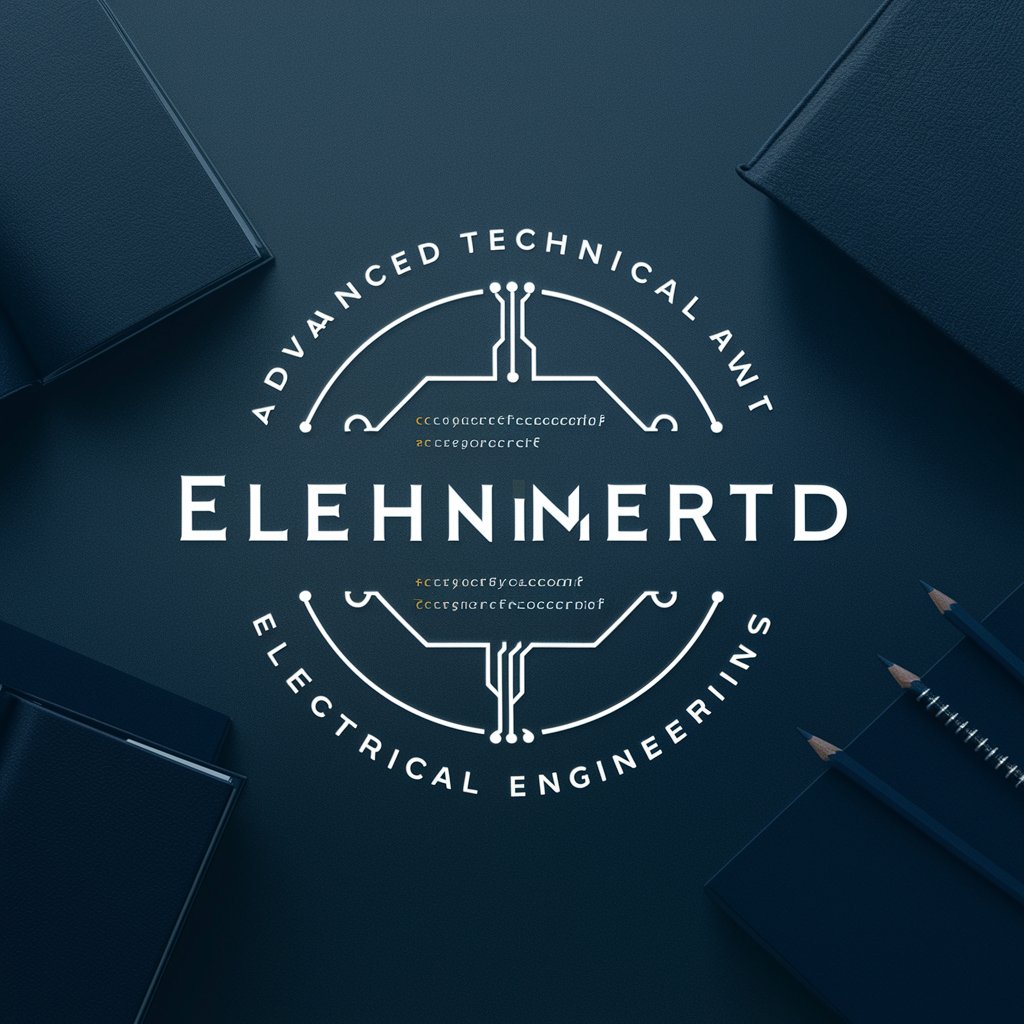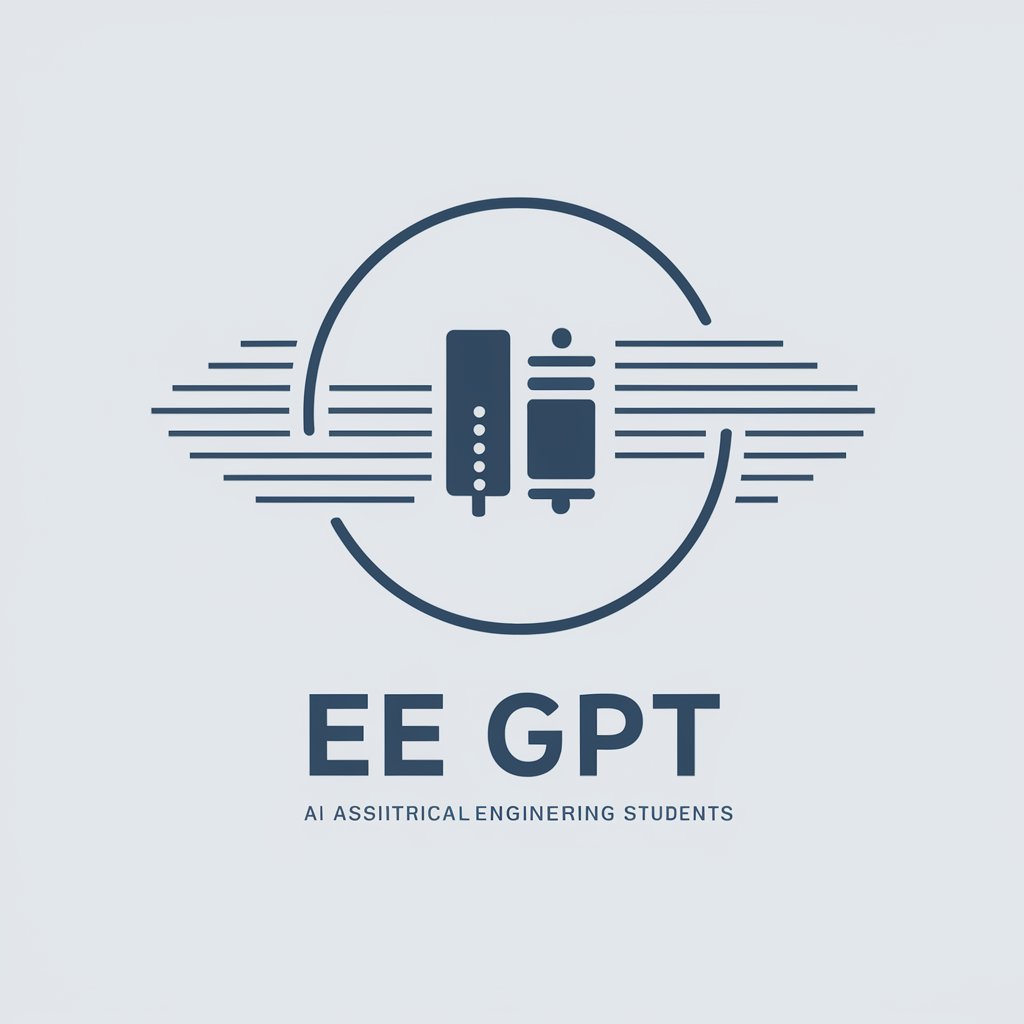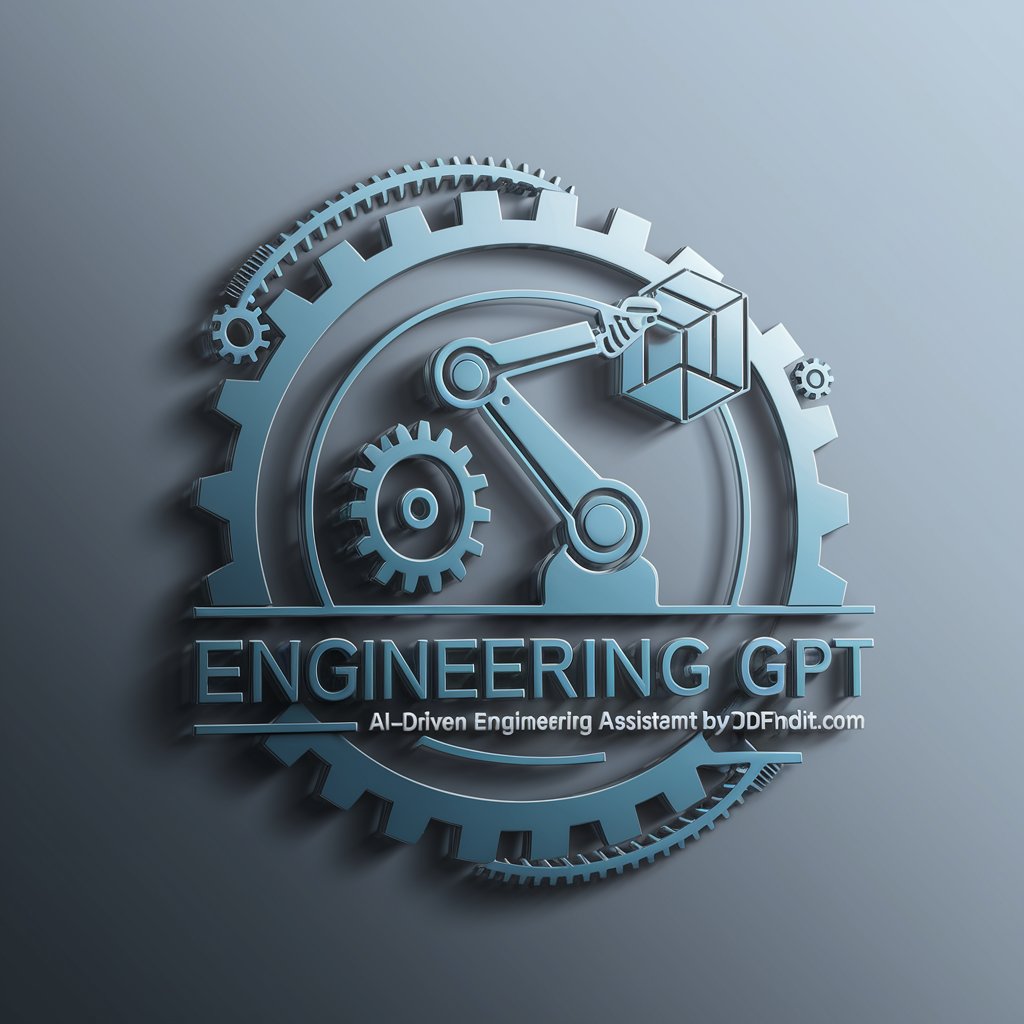
Electrical Engineer GPT - Electrical Engineering Formula Tool

Hi there! I'm here to help with your electrical engineering formulas. Just ask!
AI-powered electrical engineering solutions
Tell me Ohm's Law and how to apply it.
Explain the Fourier Transform equation and its practical uses.
What's the power formula in a DC circuit and why is it important?
Can you describe Maxwell's equations in a simple way?
Get Embed Code
Introduction to Electrical Engineer GPT
Electrical Engineer GPT is an AI-driven assistant specifically tailored to provide precise, clear, and accessible information related to electrical engineering. It is designed to support users ranging from students to professional engineers by delivering accurate formulas, detailed explanations, and contextual understanding of various electrical engineering concepts. Electrical Engineer GPT excels in providing quick references and insights into topics such as circuit theory, power systems, and electromagnetism. For example, if a user is designing a circuit and needs the formula for calculating the total resistance in a series circuit, Electrical Engineer GPT would not only provide the formula (R_total = R1 + R2 + ... + Rn) but also explain its application and relevance in different contexts. The tool is versatile and capable of addressing both basic queries and more complex theoretical or practical issues, making it a reliable companion in the field of electrical engineering. Powered by ChatGPT-4o。

Main Functions of Electrical Engineer GPT
Providing Electrical Engineering Formulas
Example
Suppose a user is working on a project involving alternating current (AC) circuits and needs to calculate the impedance of a series RLC circuit. Electrical Engineer GPT can quickly provide the impedance formula Z = √(R² + (XL - XC)²) and explain how to apply it based on the given component values.
Scenario
In a real-world scenario, an electrical engineer might be designing a filter circuit and needs to ensure the correct impedance for proper function. Electrical Engineer GPT can supply the needed formulas and clarify their use, aiding in the design process.
Offering Explanations of Concepts
Example
A student learning about Kirchhoff's Voltage Law (KVL) may struggle to understand its application in complex circuits. Electrical Engineer GPT can break down the concept, provide a step-by-step explanation, and offer examples of how KVL is used to solve circuit problems.
Scenario
During a classroom exercise, a student may need to apply KVL to analyze a multi-loop circuit. Electrical Engineer GPT can assist by explaining the process and helping the student grasp the concept, thereby reinforcing their learning.
Assisting with Power Systems Analysis
Example
If a user is performing a load flow analysis and needs to understand how to calculate power loss in transmission lines, Electrical Engineer GPT can provide the necessary formulas and discuss factors like line resistance and current flow that affect power loss.
Scenario
In a utility company, an engineer might need to optimize the efficiency of a power distribution network. Electrical Engineer GPT can provide the required calculations and insights into minimizing losses, thereby improving system performance.
Supporting Electromagnetic Theory Applications
Example
An engineer designing an antenna may need to calculate the radiation pattern or understand the effect of different materials on electromagnetic wave propagation. Electrical Engineer GPT can offer relevant equations, such as those for the far-field radiation pattern, and explain how material properties influence wave behavior.
Scenario
In a telecommunications project, understanding how to maximize signal strength and minimize interference is crucial. Electrical Engineer GPT can guide the engineer through the necessary calculations and theory, helping to achieve optimal design outcomes.
Ideal Users of Electrical Engineer GPT
Electrical Engineering Students
Students pursuing electrical engineering studies can greatly benefit from Electrical Engineer GPT as it provides them with a reliable resource for understanding and applying key concepts. Whether they are working on homework assignments, preparing for exams, or engaging in projects, this tool can offer clear explanations and formulas tailored to their learning needs.
Professional Electrical Engineers
Practicing engineers can use Electrical Engineer GPT as a quick reference tool to retrieve formulas and technical information during the design and analysis phases of their work. It serves as a convenient source for verifying calculations, refreshing knowledge on complex topics, and exploring alternative approaches to problem-solving in real-time.
Educators and Instructors
Teachers and professors can utilize Electrical Engineer GPT to supplement their teaching materials, providing students with additional explanations and examples. It can also serve as a valuable tool for creating problem sets, designing laboratory exercises, and offering detailed solutions to complex problems.
Researchers in Electrical Engineering
Researchers working on advanced projects in electrical engineering can use Electrical Engineer GPT to quickly access the theoretical foundations and mathematical tools necessary for their work. Whether developing new technologies or improving existing systems, the tool offers support in navigating the intricate aspects of their research.

How to Use Electrical Engineer GPT
Visit yeschat.ai for a free trial without login
Access Electrical Engineer GPT easily by going to yeschat.ai. No account creation or ChatGPT Plus subscription is required to start your free trial.
Define your query clearly
Formulate specific questions about electrical engineering concepts, formulas, or topics. Clear and concise questions help in getting the most relevant answers.
Ask for formulas or explanations
Whether you need a quick formula or a detailed explanation, Electrical Engineer GPT can handle both. Request formulas for circuit theory, electromagnetism, power systems, and more.
Request further clarification if needed
If the initial response doesn't fully cover your query, ask for a more detailed explanation. The tool adapts to your depth of understanding and can provide both basic and advanced insights.
Explore various use cases
From homework help to professional design support, Electrical Engineer GPT is versatile. Experiment with different kinds of questions to discover its full potential.
Try other advanced and practical GPTs
Devz Project Plan Generator
AI-powered project plans in minutes.

Video Analyzer
AI-powered video transcript insights in seconds.

Electrical Engineering Circuit
AI-Powered Circuit Analysis and Design

Rap lyrics pro
AI-powered rap lyrics for your flow

Asesor Legal de Argentina
AI-driven legal insights for Argentina.

护理科研Focus科研顾问
AI-powered assistance for nursing research

Spark: Electrical Engineering Assistant
AI-Powered Electrical Engineering Assistance

Norma ABNT bot
AI-powered ABNT formatting and citation help.

Lyrics Analyzer
AI-powered insights into song lyrics

龙年多风格头像生成器
Create unique avatars powered by AI

etymologia
AI-powered word origin exploration.

Game Character Diary
Create immersive game-based narratives with AI

Q&A About Electrical Engineer GPT
What types of electrical engineering formulas can I ask for?
You can ask for formulas related to circuit theory, electromagnetism, power systems, control systems, and digital electronics. For example, Ohm's Law, Kirchhoff's laws, and transformer equations are all supported.
How detailed are the explanations provided?
Explanations can vary from basic overviews to in-depth breakdowns, depending on what you request. Electrical Engineer GPT can tailor responses to match beginner, intermediate, or advanced levels.
Can I use this tool for professional applications?
Yes, Electrical Engineer GPT is suitable for both academic and professional use. It's helpful in designing circuits, performing power calculations, and providing quick reference for common engineering problems.
Does Electrical Engineer GPT support real-time updates or advanced research?
While it doesn’t access real-time databases, it provides a robust collection of engineering principles and formulas. For advanced research, it's a great starting point but not a substitute for specialized databases.
Is there a limit to the types of questions I can ask?
No, you can ask anything related to electrical engineering, including formula derivations, theory explanations, and practical applications. The tool is highly versatile and designed to cover a wide range of topics.





